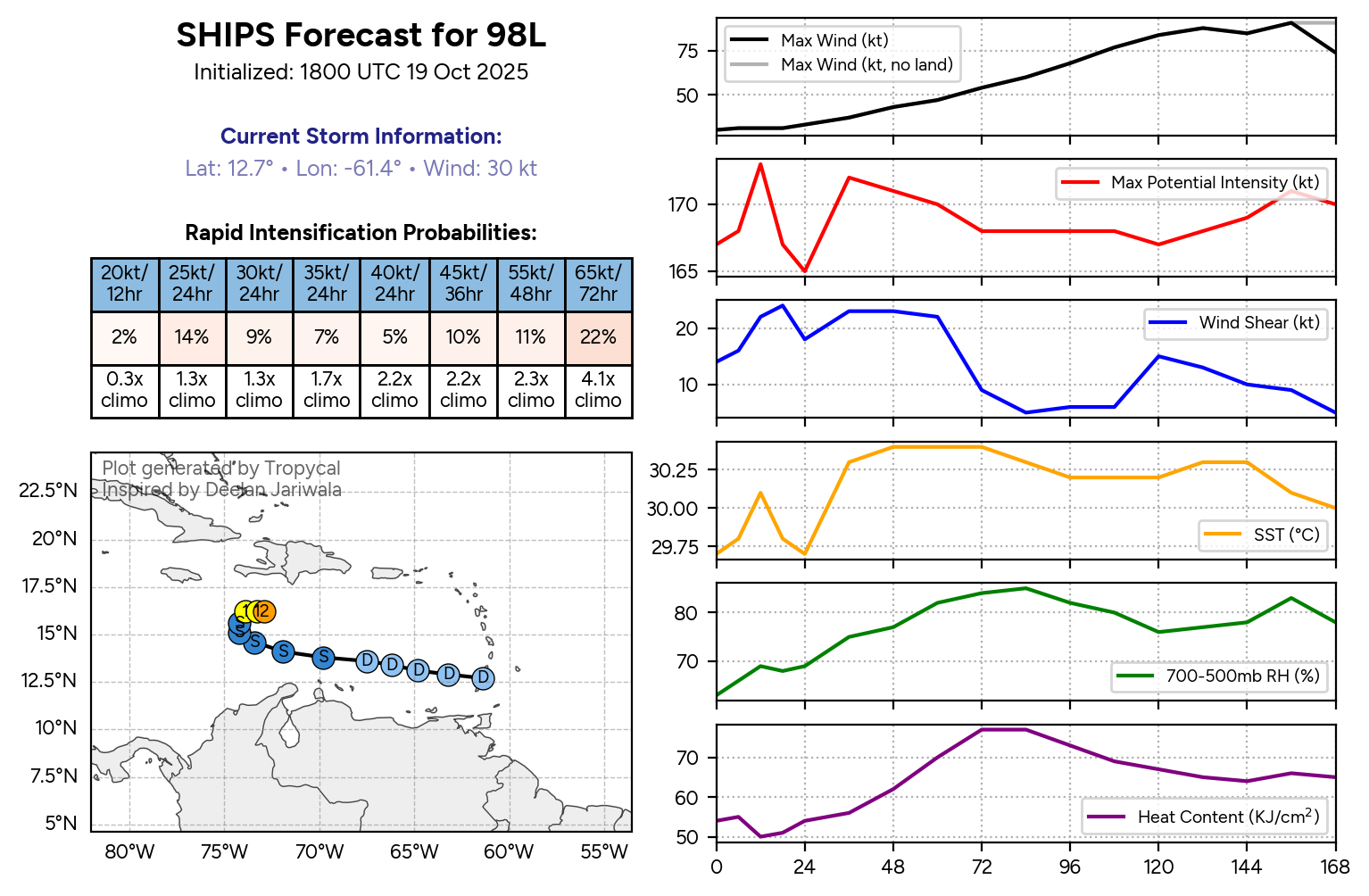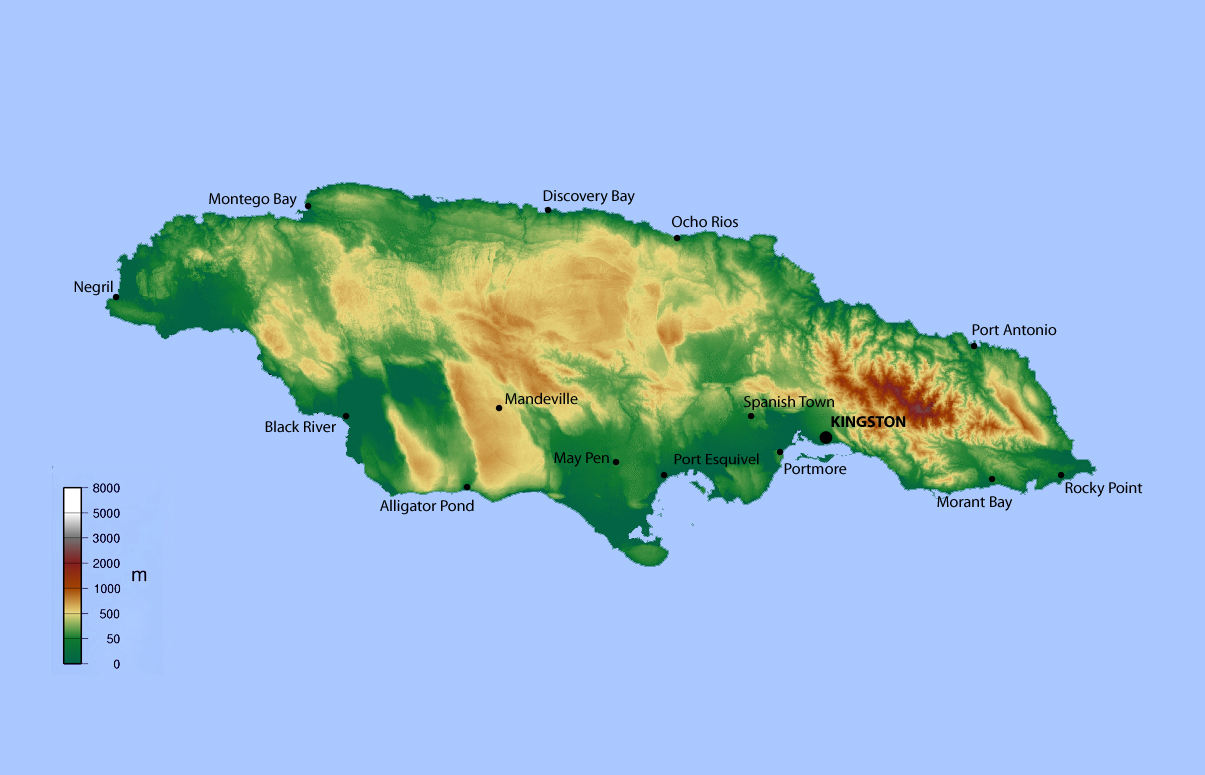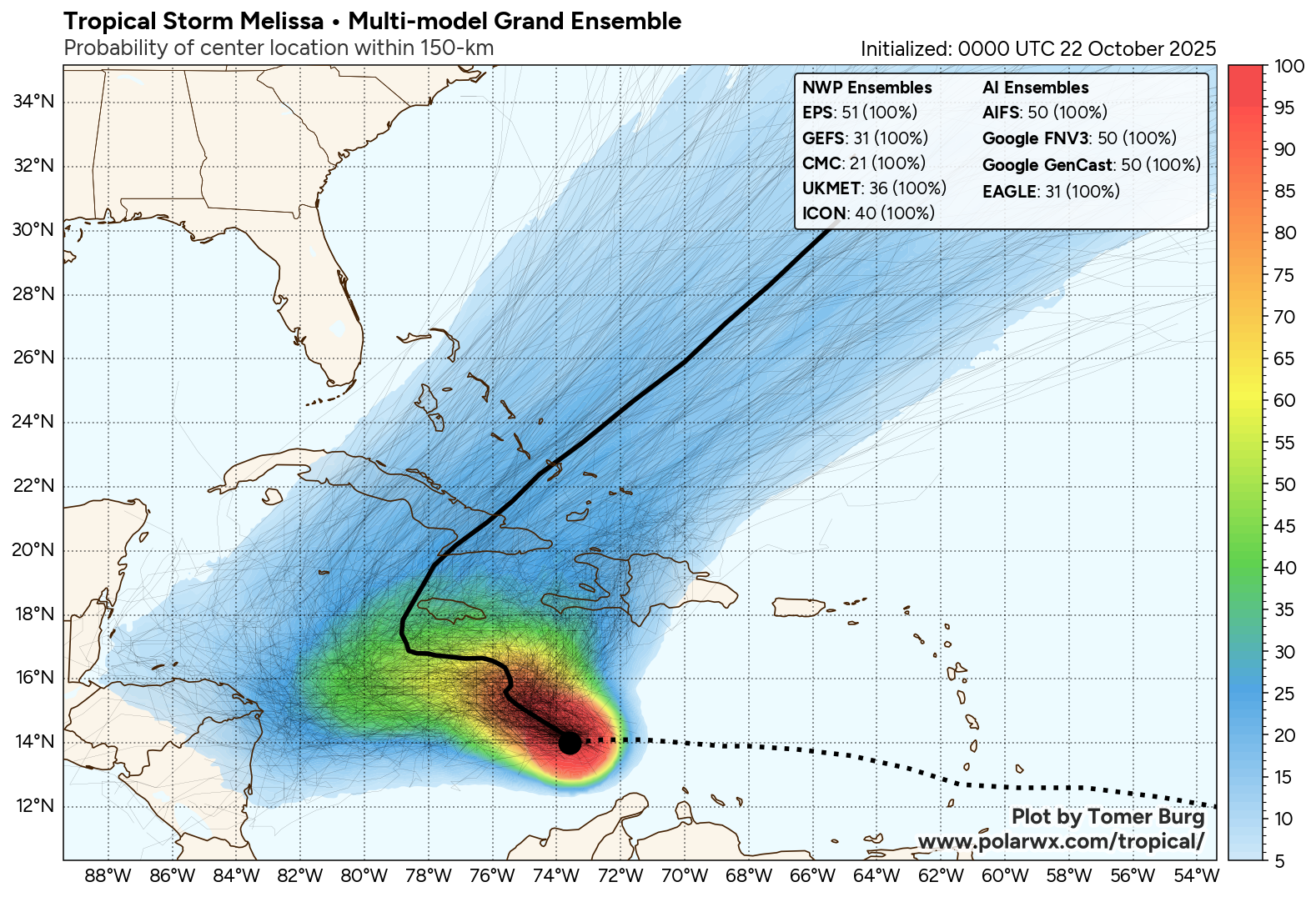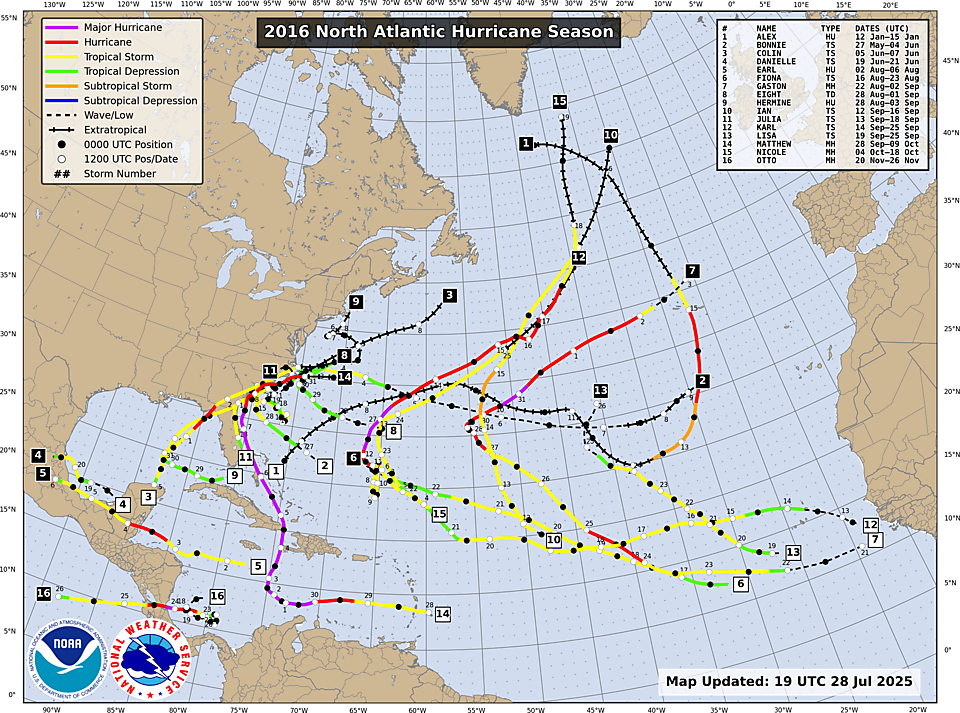Melissa, ciclone tropical potencialmente catastrófico para a Jamaica, previsão de Categoria 4 superior com
landfall e a maior parte da ilha nos quadrantes do lado direito do centro em relação à direcção do movimento. Pode ser o pior ataque de sempre de um furacão à Jamaica.
Aviso 13, às 15:00utc
O movimento lento para Oeste e depois Noroeste, antes da curva para N/NNE preparatória do
landfall, com o flanco direito a atingir a Jamaica durante a aproximação antes da viragem são as condições mais gravosas para acumulados de precipitação superiores a 300 mm e perspectiva de aumentarem acima dos 400mm.
Actualização às 16:30 utc:
"000
WTNT63 KNHC 241630
TCUAT3
Tropical Storm Melissa Tropical Cyclone Update
NWS National Hurricane Center Miami FL AL132025
1230 PM EDT Fri Oct 24 2025
...AIRCRAFT DATA INDICATES THAT MELISSA IS STRENGTHENING...
Air Force Reserve reconnaissance aircraft data indicates that
Melissa is strengthening, and maximum sustained winds are now
estimated to be 60 mph (95 km/h) with higher gusts. The minimum
pressure from aircraft dropsonde data has dropped to 999 mb
(29.50 inches).
SUMMARY OF 1230 PM EDT...1630 UTC...INFORMATION
---------------------------------------------------
LOCATION...15.6N 74.5W
ABOUT 220 MI...355 KM SE OF KINGSTON JAMAICA
ABOUT 250 MI...405 KM SW OF PORT AU PRINCE HAITI
MAXIMUM SUSTAINED WINDS...60 MPH...95 KM/H
PRESENT MOVEMENT...ESE OR 105 DEGREES AT 2 MPH...4 KM/H
MINIMUM CENTRAL PRESSURE...999 MB...29.50 INCHES
$$
Forecaster Papin
FORECAST POSITIONS AND MAX WINDS
INIT 24/1500Z 15.7N 74.6W 40 KT 45 MPH
12H 25/0000Z 15.9N 74.5W 45 KT 50 MPH
24H 25/1200Z 16.3N 74.6W 60 KT 70 MPH
36H 26/0000Z 16.5N 75.3W 70 KT 80 MPH
48H 26/1200Z 16.6N 76.0W 85 KT 100 MPH
60H 27/0000Z 16.6N 76.8W 105 KT 120 MPH
72H 27/1200Z 16.6N 77.5W 125 KT 145 MPH
96H 28/1200Z 17.5N 78.3W 130 KT 150 MPH
120H 29/1200Z 20.4N 76.7W 105 KT 120 MPH...INLAND
















